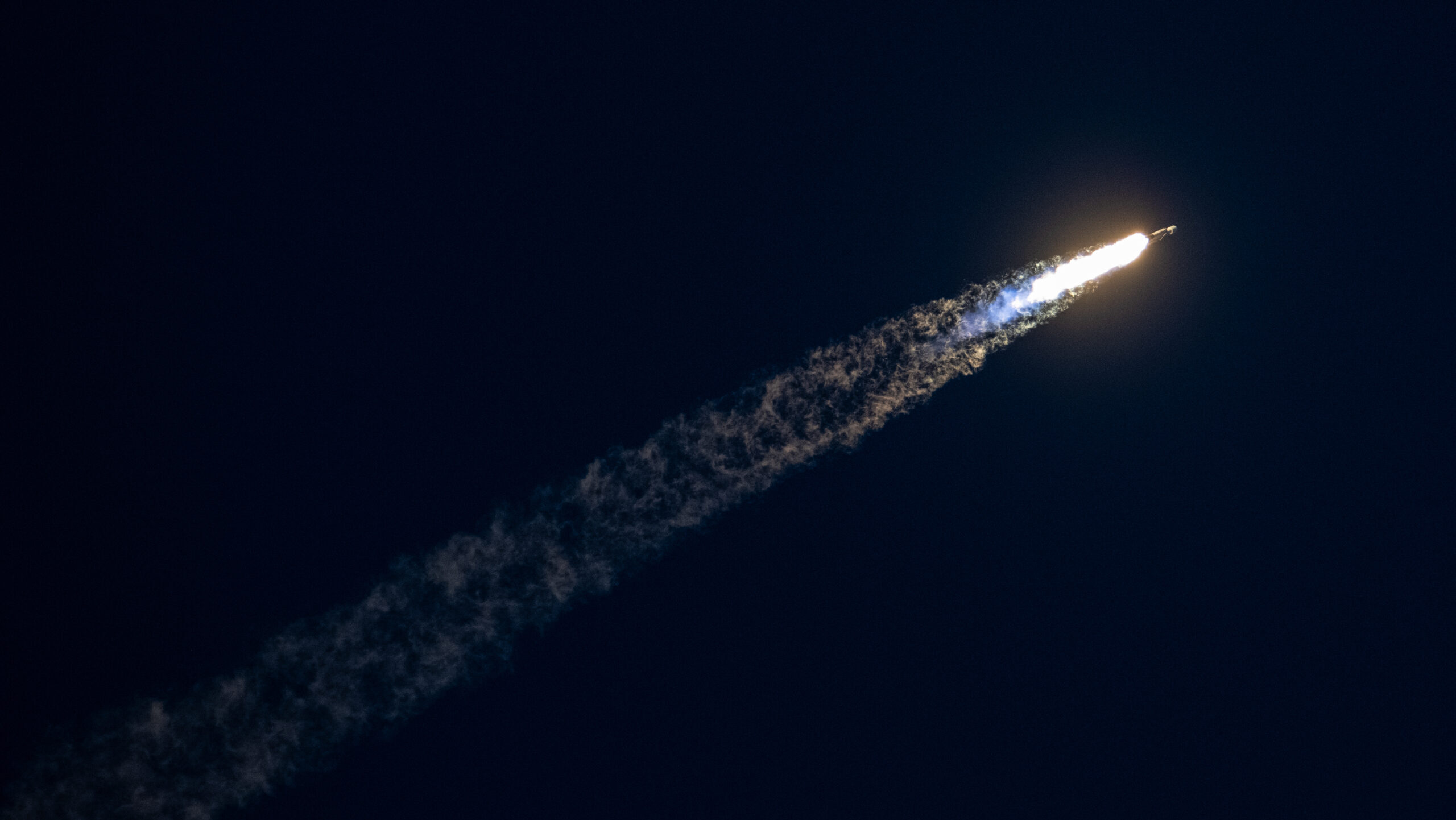
A SpaceX Falcon Heavy rocket carrying the U.S. Space Force 67 payload launches from Space Launch Complex-39A at Kennedy Space Center, Fla., on Jan. 15, 2023. (U.S. Space Force photo by Senior Airman Thomas Sjoberg)
WASHINGTON — The Space Force on Dec. 20 will celebrate its fourth birthday, having been established not quite nine months after Breaking Defense stood up a space beat and hired yours truly. It’s been a wild ride ever since.
The news cycle keeps spinning faster and faster, as more and more government and private sector actors around the world dive into the national security space whirlpool. Indeed, 2023 was a wee bit exhausting, with stories about everything rocketing in from everywhere seemingly all at once. Below find a sampling of five that stood out in some way — at least to this somewhat bedraggled chronicler.
[This article is one of many in a series in which Breaking Defense reporters look back on the most significant (and entertaining) news stories of 2023 and look forward to what 2024 may hold.]
1. How Space Force, NRO are sharing the ground-tracking mission, for now
US space policy veterans will tell you the bureaucratic tug of war over ownership of intelligence, surveillance and reconnaissance (ISR) satellites between the Defense Department and the Intelligence Community dates to long before the 2019 founding of the Space Force. But suffice to say, that simmering issue came to boil almost immediately thereafter, with some even suggesting that the new military service simply subsume the National Reconnaissance Office (NRO) — an idea almost instantly vetoed by the spy satellite agency’s many supporters on Capitol Hill.
This past year saw some fruits from concerted interagency efforts to work out their relationship issues — which include questions of acquisition authority, satellite tasking primacy and wartime command of the nation’s spy satellite fleet — with an agreement on joint development of new satellites to track moving targets on the ground. But it’s too soon to say whether the marriage counseling will be successful.
2. International meeting could imperil Pentagon’s radar, intel-gathering systems
The Geneva-based International Telecommunication Union, the world body responsible for parsing out how nations share the electromagnetic spectrum, is far from a household name to many in the US national security space community. And even among those who understand its significance, the ITU’s byzantine inner workings are often eye-glazing.
But US government agencies, including DoD, can be affected for good or ill by ITU decisions made every four years at its rule-making World Radio Conference in Dubai. This story explains the national security space equities at stake during this year’s four-week meeting, which began Nov. 20. (It also garnered me the 2023 Defence Media Award for Best National Security Space Submission, so I’m obviously biased about its importance.)
3. SPACECOM ops head ‘tired of the excuses’ about satellite tracking gaps
It is always surprising, and refreshing, to see a US military operator shoot from the hip about a problem.
In this instance, a senior US Space Command officer made it clear he was just done with the disaster epic that has been the multi-decade Air Force, and now Space Force, effort to replace its outdated computer systems for keeping tabs on objects in space and providing information about potential threats to satellite operators. Given that over the past 35 or so years there have been a dozen failed upgrade programs one after another, it’s kinda hard to blame him. (Shh, don’t mention that centerpiece of the current effort, called ATLAS, also is at a minimum delayed, according to Space Systems Command in Los Angeles.)
4. NORTHCOM’s head sets record straight on missile defense boundaries with SPACECOM
In a similar vein, it’s rare that a combatant commander speaks out to criticize another command — and it’s rarer yet for a four star’s office to reach out to a journalist to do so. But, then, US Northern Command head Gen. Glen VanHerck has a reputation for speaking his mind.
While the kerfuffle seems largely to have been caused by bad editing in a press release rather than a substantive disagreement, the story did highlight how both the 2019 re-animation of US Space Command in Colorado Springs, Colo., and the changing space environment have complicated inter-command relationships and blurred lines between their responsibilities.
5. EXCLUSIVE: New Joint Force space doctrine clarifies Space Command’s ‘offensive’, ‘defensive’ ops
Let’s be honest, most people hear the word “doctrine” and immediately want to take a nap. (This includes military folks who are supposed to follow it, as well as Breaking Defense’s editors. [Editor’s Note: Fair.]) But it’s reallllllly important to understanding how the US military bounds its missions and plans to fight.
So, to save y’all from having to actually read it, I took the deep dive into nerdom with this explainer about the new Joint Publication 3-14 (JP 3-14): Joint Space Operations. You can thank me with tips (the story-related kind) later.






















